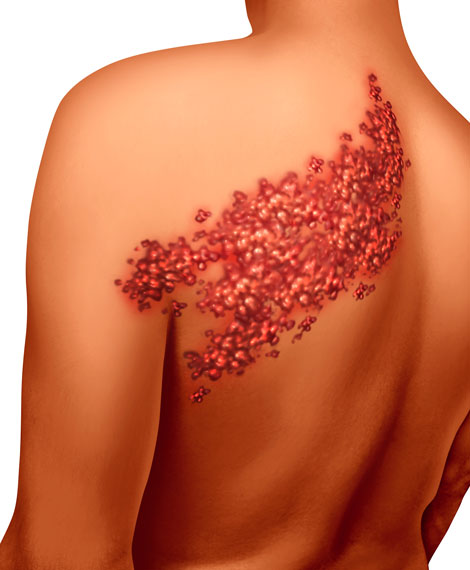Post Herpetic Neuralgia

Postherpetic neuralgia is a complication of shingles, which is caused by the chickenpox (herpes zoster) virus. Postherpetic neuralgia affects nerve fibers and skin, causing burning pain that lasts long after the rash and blisters of shingles disappear.
The risk of postherpetic neuralgia increases with age, primarily affecting people older than 60. There's no cure, but treatments can ease symptoms. For most people, postherpetic neuralgia improves over time.
Symptoms
The signs and symptoms of postherpetic neuralgia are generally limited to the area of your skin where the shingles outbreak first occurred — most commonly in a band around your trunk, usually on one side of your body. However postherpetic neuralgia is also common in people whose shingles occurred on the face.
Signs and symptoms may include:
- Pain that lasts 3 months or longer after the shingles rash has healed. The associated pain has been described as burning, sharp and jabbing, or deep and aching.
- Sensitivity to light touch. People with the condition often can't bear even the touch of clothing on the affected skin (allodynia).
- Itching and numbness. Less commonly, postherpetic neuralgia can produce an itchy feeling or numbness.
When to see a doctor
See a doctor at the first sign of shingles. Often the pain starts before you notice a rash. Your risk of developing postherpetic neuralgia is lessened if you begin taking antiviral medications within 72 hours of developing the shingles rash.
Causes
Once you've had chickenpox, the virus remains in your body for the rest of your life. As you age or if your immune system is suppressed, such as from medications or chemotherapy, the virus can reactivate, causing shingles.
Postherpetic neuralgia occurs if your nerve fibers are damaged during an outbreak of shingles. Damaged fibers can't send messages from your skin to your brain as they normally do. Instead, the messages become confused and exaggerated, causing chronic, often excruciating pain that can last months — or even years.
At Restore Medical Partners, we will ask patients to describe the location, severity and type of pain, in addition to the history of the pain: when the patient started to feel it, and any activities or positions that make the pain better or worse. We may recommend an epidural steroid injection to reduce the inflammation caused by the virus around the nerve root or we may recommend a combination of medications to reduce or alleviate your pain. Some patients may require a combination of techniques to completely resolve their pain symptoms.
REFERENCES:


